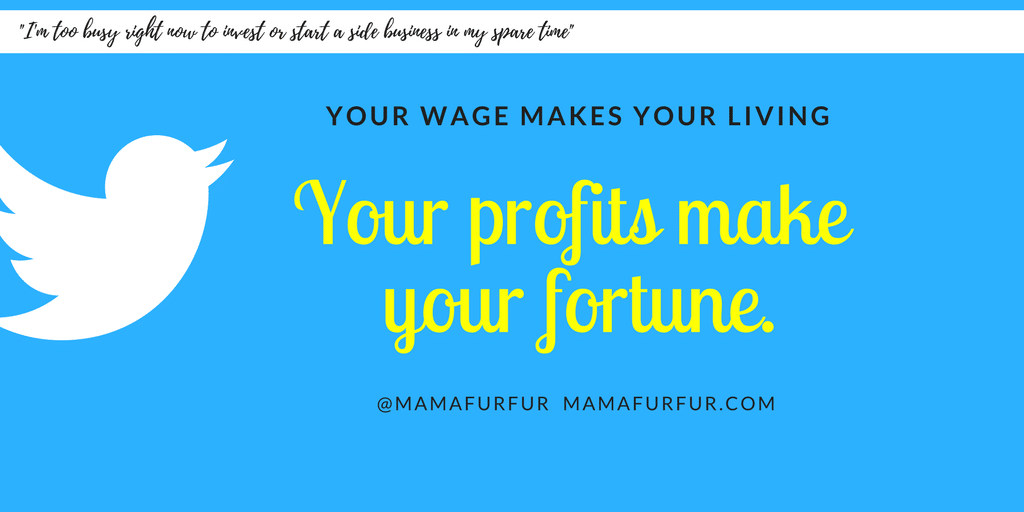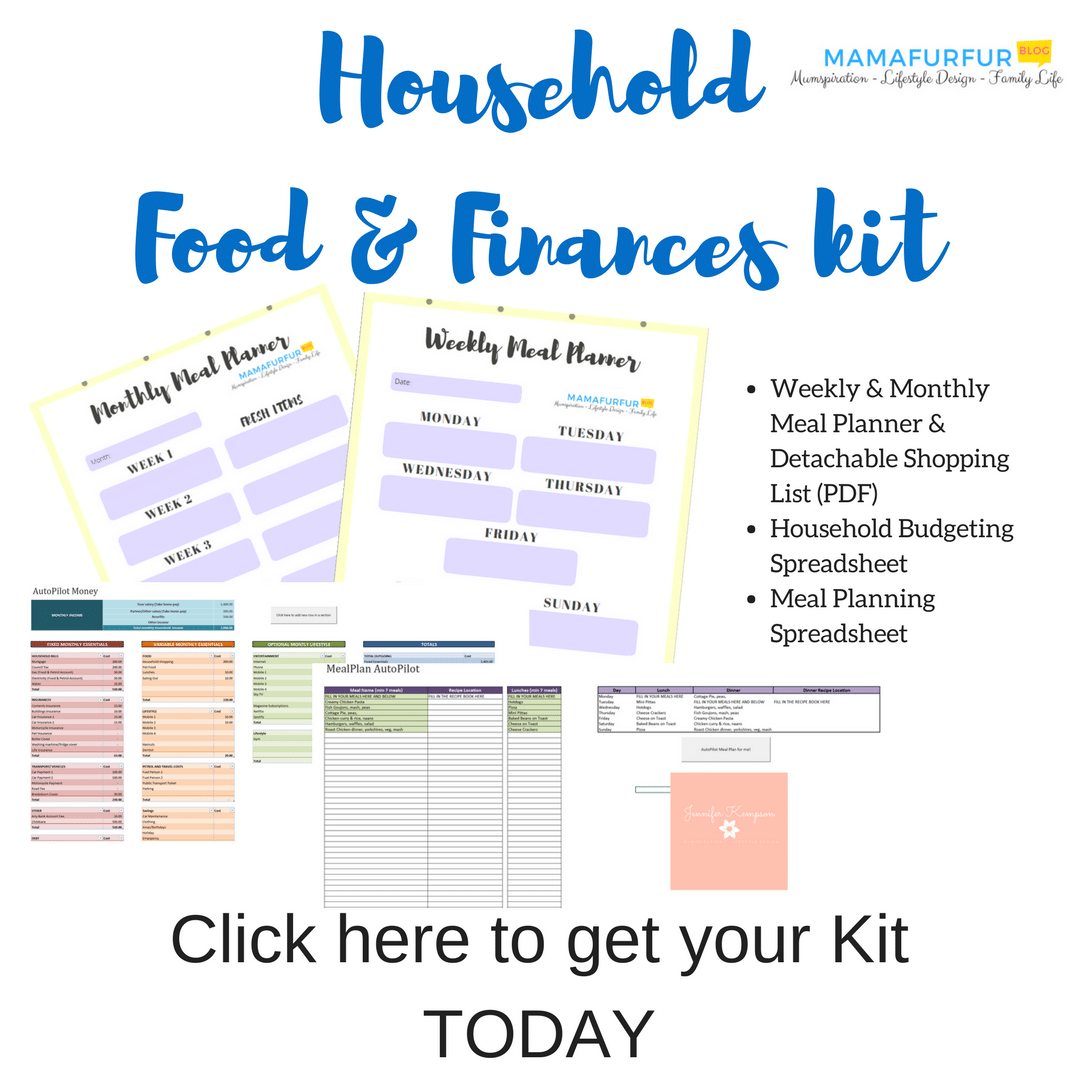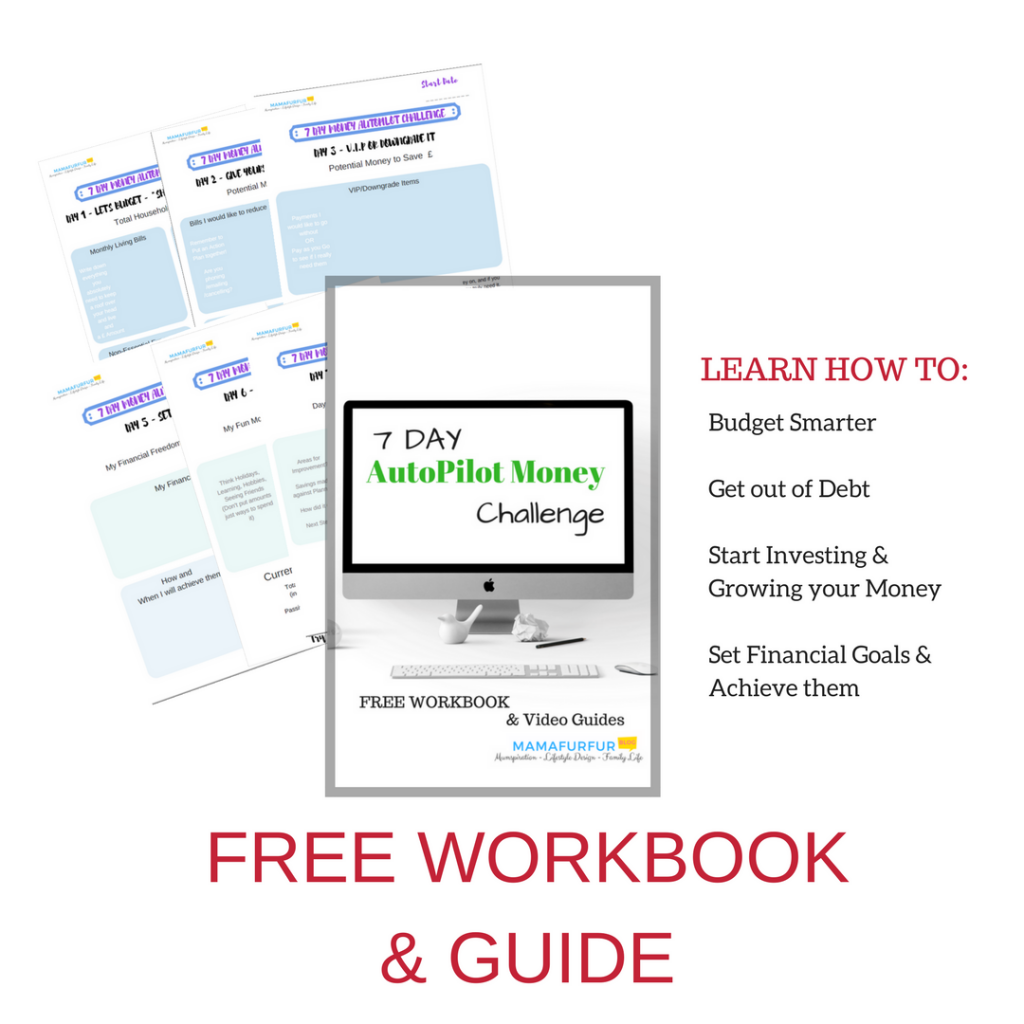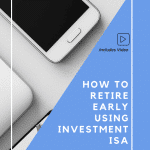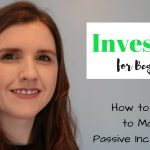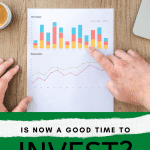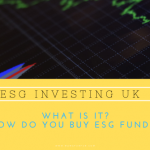On this blog, we preach financial resilience and freedom – I don’t just preach it and believe that you should have a main day job and side businesses to allow you to weather any storms in life, I live my life with this philosophy too.
My budgeting and financial planning strategy is a SIMPLE 80/20 rule – Spend 80% of your hard earned money on bills/luxuries/giving to others (or less!) and invest in yourself and your future with the remaining 20%. That means investing in passive and active investments.
Interested in finding out more, check out these other posts:
How to Calculate your Financial Freedom Exact amount goal?
How to set Goals that you can achieve
Let me add all the financial advice in my blog and posts are purely my own opinion and not a guide for your own life and money.
You must take time to research every option yourself fully before considering them, as this is your money and you are responsible to make it work as smartly as possible for yourself.
Remember our rule here is
// What is the Cash Flow Quadrant System?
One of the most well-regarded financial education books available is “Rich Dad, Poor Dad” by Robert Kiyosaki, and featured on my “Top 30 books that will change your life” Blog post for this very reason.
In brief, Robert details the life lessons he learnt from both his actual Father (nickname Poor Dad) and his friend’s Father (nicknamed Rich Dad).
He wanted to show quite clearly the contrast in thought and actions that ultimately made one person rich and living a financially free life, without the need to work to grow his riches; and his own father struggling to make ends meet and constantly stressed and struggling with finances.
Robert devised a simple four quadrant system – the Cash Flow Quadrant System – to show the breakdown of the four key money generating mindsets and income streams, and how they vastly differ.
The key quadrants to remember here are the quadrant you currently find yourself on, the emotions you feel right now about your situation, and then comparing this to where you would ideally like to be.
To move quadrants, ultimately this is down to mindset and skills learnt and applying.
In essence you can move quadrants freely, however financial and time freedom really is only truly achieved in the Business or Investor quadrants and we will see why.
// The “E” Employee Quadrant
The Employee mindset and actions is someone who makes money from working for other people.
They may go to the office every day or have some flexibility over their hours and location.
Typically they work up to 40 hours a week, Monday to Friday with set number of holidays each year, and must report in to a more senior employee to check their work output or progress.
They benefit from job security, where to some degree as long as the company wishes to employ them, they will have a way to generate money.
The amount each month generated will be either fixed or within a predetermined amount (think of Sales who could be targeted with a limit to that amount).
To retire early from this quadrant to be financial free will require planning and commitment and usually not possible if you stay exclusively in this quadrant.
// The “S” Self-Employed Quadrant
This quadrant tend to have a profession and work from themselves officially instead of an employer, such as Doctor, Lawyer or similar.
Most self-employed people do make a far amount of money, but similar to the Employees they must exchange their time usually for money and it is directly proportionally to how hard/often they work.
They do have freedom to choose working hours normally, and also holiday length and number of days. The only limitation to holidays taken is that it will reduce money received accordingly.
Typically Self employed people take a high regard for their work, but do not wish to be tied down to restrictions of working for someone else instead.
// The “B” Business Owner Quadrant
The Business Owner is starting to move from the left hand side of the Cash Flow Quadrant cycle towards the right and will start to receive freedom from their choices.
The Business owner will own a system rather than work for someone else.
Examples of this would be people who have started their own companies, with any number of employees carrying out key tasks for them, or perhaps even an individual in Network Marketing.
Through hiring other “Employees” to do the work necessary to create income for themselves overseeing the whole process, they have found a way to start removing their own time for money.
They may label themselves an Entrepreneur in that they will try to find ways to reduce their input in the process over time, without the income from the business reducing.
They delegate as much as possible, and also realise that their own limitations should be overcome by using other people’s talents instead.
To be successful in this quadrant, they will need to find a way oversee and delegate correctly to ensure they are not the bottleneck for all decisions for the company.
Their time will become their own and their wealth will not be determined by the hours they spend on the business but rather the overall success of the company.
Ultimately in this quadrant, the owner may aspire to building the business to greater growth and incomes to eventually sell to another “Business” owner and retire early on the income from the sale.
// The “I” Investor Quadrant
The Investor knows that money is a tool to create more money, and independent from their time.
They believe that their time does not need to be exchanged in order to create more income.
They may even use other people’s money to create more money for themselves.
They receive their money from stocks and shares, investments, bonds, property investments, dividends, rental income and may even use trust managers to ensure that money created is balanced as best as it can be for maximum profits.
They have removed themselves completely from the way to make more money, and income is created regardless of the time or day of the week and on autopilot in the background.
They can live and work whenever they choose, without limitations in any way.
The skills they must develop are learning to read profit loss sheets of a company, understanding numbers rather than personal opinions and learn from any mistakes along the way.
They also learn to live on less money than they earn, to ensure they are constantly available to reinvest when they see an opportunity.
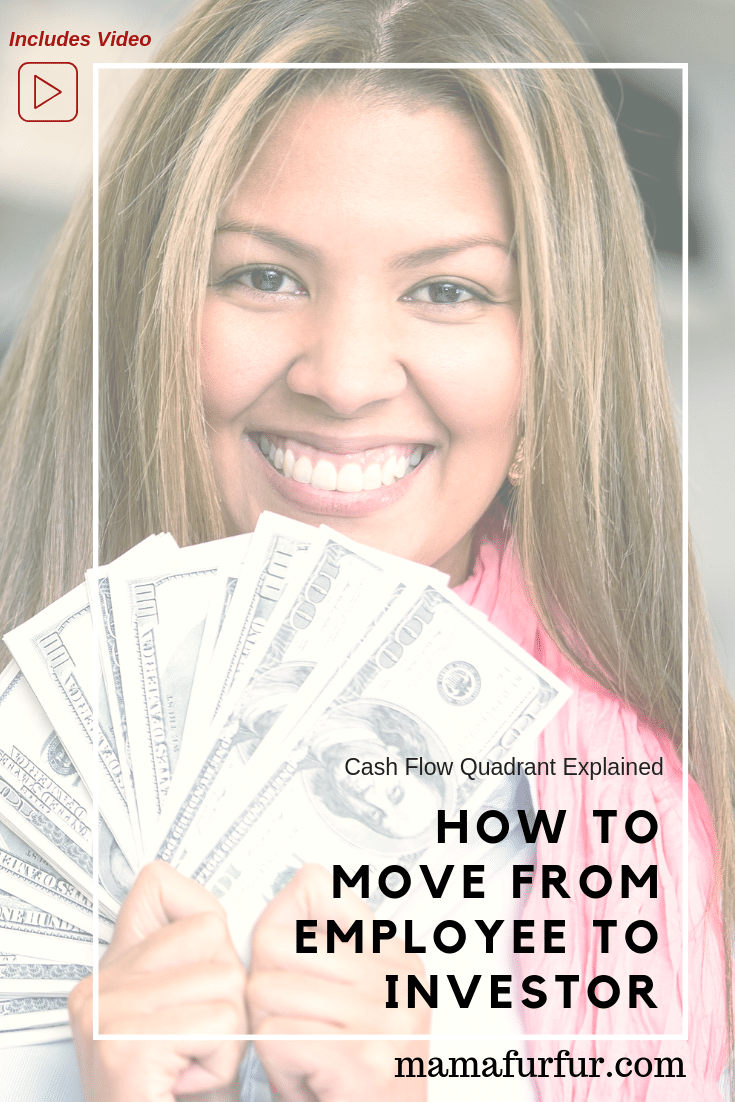
// How to move from Employee to Investor
Many people are frightened or scared of the word “Investing” and believe it is only for the super wealthy or people who are “good with maths“, but I am here to make you feel comfortable enough to start your own investing today and generate that passive income for your future.
My first way to get started with Investing in the Stock Market through an Investment ISA.
I personally recommend everybody consider having an ISA without doubt in their saving accounts, and at least one with a high rate of possible return like an Investment ISA.
Most banks will allow you to open up this type of ISA, along with a Cash ISA, and give you a few investment fund options if you want a general place to start and test the water.
// More about Investment ISA/ Stocks and Shares ISA
Now I can hear you shouting from your laptop screen already “Jennifer investing in the Stock Market scares me too much” but let me assure you – passive income (i.e. where you don’t actively do the hard work for the money) is just as real as active income.
In fact it is better – as you don’t trade your own finite resource of time for it.
Why Investing is key to a financial security and long term strategy is that Investing buys you Assets in a company.
The nature of Assets over Liabilities in your wealth creation process is that Assets INCREASE in value over time.
When those assets grow in value compared with the current paying rate, you receive a dividend of the company profits and also allows you to sell the assets for a much higher price that you bought it for.
Thus making you more money than your initial investment cost.
If you learn or do nothing from reading this article apart from investigate further investing some of your monthly finances into an Investment ISA – my work here is done.
You will hands down have MORE MONEY next year as a result without any effort.
Maybe only enough to pay for an extra take away each month at the very start, but that is still extra income you didn’t have by using your money smartly.
This is my constant side income and it works on autopilot along with my Pension, creating an income that I can live off in the future years.
And the wonderful thing about an Investment ISA or any non-Pension investments is that you don’t need to be 55 years old or over to spend that interest as your living wage.
Key elements should be that you need an investment that is index linked or where your money is invested in many industries/types of investment as a collection (you never see the break down of each company) – invest in individual companies as you wish, but for me it is too great a risk.
An index linked Investment will as near perfect as possible beat any gamble on a company long term.
If you are new to Investing, my recommendation is to do your research but strongly advise saving in an Investment ISA instead of a regular ISA with your savings.
First reason being that right now in the UK the interest rate on a normal cash ISA is around 0.5% yearly, hardly worth the effort and might as well be in a normal savings account.
With an Investment ISA you are putting that money into the stock exchange, but reeping the rewards of tax free savings too.
Up to £20k currently you can save in the various forms of ISAs each year tax free and that adds up.
With the beauty of compound interest, that could add up to £500k within a matter of 15 years giving you approximately £2k a month to live off as pure interest profits.
What to know how compound interest works? Check out my video here:
This is based on an average of 4-6% return on investment of course, and only given as an example as all interest levels vary on the current market as does your mortgage and savings interest rates.
I commit to investing in my Investment ISA and Investment accounts as near as 20% of our household wage as I can, any extra money goes into this fund each month too.
For example, this year alone, I have seen around 9% return on investment in that particular side stream (which I invested back into the fund) and happy to leave it there until I absolutely need it.
Monthly costs:
Minimum Monthly Payment to Investment ISA £50-100+ usually
0.15-0.4% Annual maintenance fee* be sure to shop around for the lowest as this will take away from your investment profits each year.
// Key points to remember when choosing funds to invest in
The lower the fees/costs involved to invest the better as this is Maintenance fee is the charge for using their services and taking away from your personal income stream.
Be careful to make sure it is never as high as 1-2%+ as that could really make a huge dent in your profits as funds grow bigger!
I personally use Vanguard Investment ISAs and Investment accounts, with my own money in a variety of low cost funds such as their Lifestyle Strategy 80% Stocks/20% Cash mixed fund (based on my risk level, age, current employment situation) and then the UK FTSE 100 Index for backing my own country’s businesses.
You should investigate purchasing shares in Index funds over individual companies where possible to help spread the risk of your investment going down, but of course this is your money so feel comfortable with what you do with it.
The key points to remember when choosing your investment type are based on your risk level and also which particular areas of investment you wish to be involved in.
This could be anything from property to Emerging Countries to Cash.
It is worth remembering that Cash isn’t a form of investment as you are not buying an Asset in a company.
Cash will lose it’s value generally over the years, so whatever your risk threshold – try to make sure your balance of fund contains a good amount of Stocks and Shares for your comfort level.
In general, I try to go for between 50-95% Stocks and shares to Cash ratio in my own investment funds selection for our family.
The longer you wish to leave your money of course, the highest the risk you might potentially want to select.
// How long will it take me to Retire EARLY?
This is where the magic starts to happen, and why I believe everyone should use the tax free benefits of an Investment ISA.
If you were to start from the age of 18 and save only £100 a month consistently until your 55th birthday into a Investment ISA (so £1200 total a year out of your £20k maximum), you would have £446k in savings to retire at age 55 if we used a modest rate of return of 10%.
This amount would generate roughly £44k pre-tax wage for you to live on, if the market returned at least that constant rate of return (no guarantees remember, but good to aim for).
Let’s say then you are age 35 right now and wish to be draw that same £44k wage a year too at age 55 retirement, that would require instead £600 a month.
So you can see how easily when time is on your side, you can become rich, but also you can easily get there even if your budget allows.
For example another way, if you were to save 10% of your income each month into that same Investment ISA with 10 YoY Growth, in 20 years you would have produced your same income through passive income from the profit on your ISA.
That means in 20 years, you can give up work if you are able to make ends meet with your current wage or less.
Increase those monthly contributions by 10% each year, and you cut that time down to 11-12 years from when you start.
Everyone can do this, and I know I am personally aiming to max out my Investment ISA contributions to allow us to be financial free as quickly as possible where we can.
As with everything to do with investments, the stock exchange goes up as well as down so there is no guarantees but a great reminder to push you in the right direction.
// Can I start to invest for my children too?
Just like the example above, the earlier you start saving and DON’T TOUCH IT – the better and richer you will be when you finally come to withdraw money from it.
You can open up Junior ISAs with certain companies such as Vanguard and certain banks, committing to putting away from £5-£4000 a year, and your child can gain access to the money at age 18 or transfer it to a normal Adult ISA to continue saving.
If you were to put away the maximum £4000 per child in a Junior ISA, with 10% YoY growth, that would equal nearly £218k as a 18th birthday present alone that they could continue to save with or attend university/buy a home etc.
The other great option is that you can open a Pension in their name as soon as you have a birth certificate – I’m sure you can do the maths to know that they could truly be millionaires when they retire at age 55 with small savings of around £100 a month from birth until they wish to retire.
The power of compound interest, good returns on your investments through buying Assets, and time on your side really is a game changer to guarantee your children less financial worries.
// You can be in more than one quadrant at a time
A question I am asked often is do you need to wait and only focus on one quadrant at a time?
Absolutely not! You can start to create incomes in any of the quadrants at any point, even if you are currently an Employee for someone else.
I would always encourage people to investigate which quadrant on the right hand side (Business owner or Investor) interests them the most and to start to find a way to enter the quadrant.
It could be starting your own business on the side, outside of your normal working hours.
For example, in my own life I have side business ideas of this blog, youtube channel and my own Etsy store for downloadable items where people can purchase items that will help their home and financial freedom journey.
It could be moving your savings to an Investment ISA or topping up your company pension.
Whatever you decide, it is important to generate as many incomes as you can where you do not exchange your time for money so that truly you can become financially independent from having to exchange your time for money.
// Want to take the next leap and shape up your household spending completely?
Why not sign up for my free 7 Day AutoPilot Money Workbook where I show you exactly how to change your financial future for good?
No more stress, no more worry – only FULL STEAM AHEAD to financial security ahead!
Are you overwhelmed with Debt and don’t feel there is a way out of endless monthly payments taking all your money?
Do You feel Trapped Working Full Time when you long to be at Home with the Children instead?
Not enough money left over each month or barely enough to last you post the few few weeks?
With my Tried and Tested Principles, we can change your financial life around completely in just 1 week.

